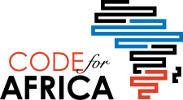Sensors, scraping, surveys. Different techniques of data collection can be used for creating new and necessary databases
Data Collection
Track tutorials
Open Doors and Open Data By Learning Data Jargon One of the biggest issues journalists face when confronted with the abundance of new data sources is the vast array of jargon used by technical experts communicating the nuances of their field. The geospatial community is particularly adept at creating obscure terminology and exotic file types. Dropping a […]
What are Field Papers? As this set of tutorials demonstrates, there are many ways to collect data for use in mapping. For most circumstances a smartphone or a GPS unit will provide connectivity in even the remotest of places but each has its limits. This is where field papers can fill the gaps. Using simple […]
FrontlineSMS: How to Create a Mobile Newsroom for Disaster Reporting
Crowdsourcing Crowdsourcing Data Data Mobile MobileCommunicating During Crisis The Philippines is an island nation of more than 100 million people living at the doorstep of climate change. Each year Filipinos face recurring natural disaster; enduring typhoons, severe drought, floods, and coastal erosion. As journalists living in a country where disaster is a fact of life, the Philippine Network of Environmental Journalists (which […]
You can easily edit the OpenStreetMap base map that you find at www.openstreetmap.org. And while doing it you will become part of the community of thousands of mappers worldwide who are creating the map together. No related posts.
You may wish to actually get at the data in OpenStreetMap and extract a spreadsheet of information – not just latitude and longitude but also every detail about each point of interest or feature. No related posts.
Balloon mapping provides individuals or groups with a low-cost means to create a running record of events in map form, one that is temporally accurate and easy to share. No related posts.
Ushahidi is a great open-source software for presenting many kinds of information on a map. You can set up an Ushahidi site using Crowdmap which will help you tell a story by bringing together a map with the information and reports you choose to include. No related posts.
No tutorials found.
In an effort to bring local context to climate reporting in Western Colorado, Julia Kumari Drapkin started iSeeChange–an online weather and climate journal–in 2012 to help identify how the listeners of her local community radio station were being impacted by changes in the environment. Four years later, iSeeChange is a hybrid citizen-science, social media platform used by people around the world to document and share their experience of environmental change. Using geotagged photos coupled with data on the weather and atmospheric conditions, iSeeChange is working to create a collective climate journal for present and future generations.
Accessing useful data about the status of our planet’s environment is often a struggle. From with the variety of sources to the diversity of formats and tools out there, journalists interested in using data in their environmental reporting often spend more time finding and downloading the information than actually analyzing it. Over the past few […]







